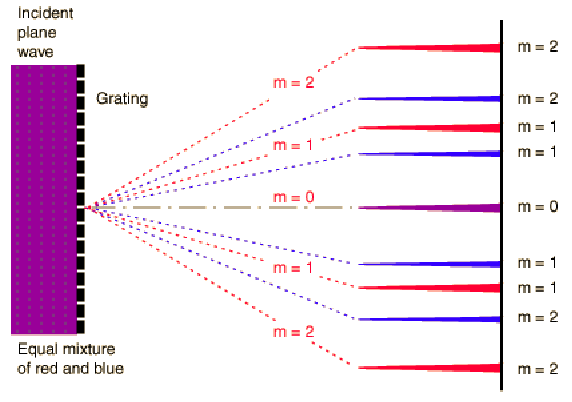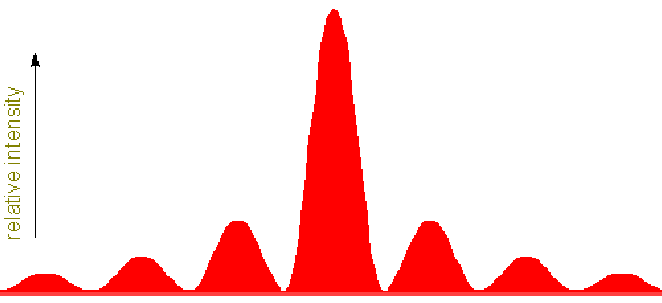When monochromatic light passes through a diffraction grating, fringes are produced at angles![]() given by
given by![]() (1)
(1)
If the light incident on a diffraction grating is made up of several different colours or wavelengths, then for each value of n, there will be a bright fringe at a different value of![]()

At![]() there is a white maximum, because all the different wavelengths of light are in phase for
there is a white maximum, because all the different wavelengths of light are in phase for![]() On either side of this maximum, white light is diffracted into fringes of different colours, with red light – having the biggest wavelength – having larger values of
On either side of this maximum, white light is diffracted into fringes of different colours, with red light – having the biggest wavelength – having larger values of![]() for each
for each![]() according to (1) so being diffracted the most. Conversely, blue light has the smallest wavelength so is diffracted the least.
according to (1) so being diffracted the most. Conversely, blue light has the smallest wavelength so is diffracted the least.
Notice also that the width of the fringe – the distance between the blue and red ends – increases as we move away from the central fringe. This is because while the angular width of each fringe might be the same or very similar, the images are formed on a flat screen, which tends to increase the width of the fringes corresponding to![]() The amount of light reaching the screen decreases for increasing m. This is due to the same effect as in a single fringe diffraction patter.
The amount of light reaching the screen decreases for increasing m. This is due to the same effect as in a single fringe diffraction patter.
